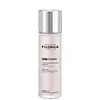What's inside
What's inside
 Key Ingredients
Key Ingredients

 Benefits
Benefits

 Concerns
Concerns

 Ingredients Side-by-side
Ingredients Side-by-side

Water
Skin ConditioningGlycerin
HumectantButylene Glycol
HumectantCapryloyl Glycine
CleansingCitric Acid
BufferingDimethicone PEG-7 Phosphate
CleansingSodium Hydroxide
BufferingSodium Polyacrylate Starch
AbsorbentEthylhexyl Salicylate
UV AbsorberDisodium EDTA
Parfum
MaskingSodium Chloride
MaskingSucrose Palmitate
EmollientCetrimonium Bromide
AntimicrobialCaesalpinia Spinosa Gum
Skin ConditioningButyl Methoxydibenzoylmethane
UV AbsorberSalvia Sclarea Extract
AntiseborrhoeicGlyceryl Linoleate
EmollientDiethylhexyl Syringylidenemalonate
Skin ProtectingPrunus Amygdalus Dulcis Oil
Skin ConditioningPotassium Sorbate
PreservativeSodium Benzoate
MaskingGlucose
HumectantCyamopsis Tetragonoloba Gum
Emulsion StabilisingXanthan Gum
EmulsifyingAlteromonas Ferment Extract
Skin ConditioningPentaerythrityl Tetra-Di-T-Butyl Hydroxyhydrocinnamate
AntioxidantPotassium Chloride
Calcium Chloride
AstringentPhenoxyethanol
PreservativeSodium Hyaluronate
HumectantMagnesium Sulfate
Glutamine
Skin ConditioningSodium Phosphate
BufferingAlcohol
AntimicrobialAscorbic Acid
AntioxidantSodium Acetate
BufferingTris(Tetramethylhydroxypiperidinol)Citrate
StabilisingLysine Hcl
Skin ConditioningArginine Hcl
Skin ConditioningAlanine
MaskingHistidine Hcl
Skin ConditioningValine
MaskingLeucine
Skin ConditioningThreonine
Isoleucine
Skin ConditioningTryptophan
MaskingPhenylalanine
MaskingTyrosine
MaskingGlycine
BufferingPolysorbate 80
EmulsifyingSerine
MaskingCystine
MaskingCyanocobalamin
Skin ConditioningGlutathione
Asparagine
MaskingAspartic Acid
MaskingOrnithine Hcl
Skin ConditioningGlutamic Acid
HumectantNicotinamide Adenine Dinucleotide
Skin ConditioningTocopherol
AntioxidantProline
Skin ConditioningMethionine
Skin ConditioningTaurine
BufferingHydroxyproline
Skin ConditioningGlucosamine Hcl
Coenzyme A
Skin ConditioningCI 17200
Cosmetic ColorantSodium Glucuronate
HumectantThiamine Diphosphate
Skin ConditioningRetinyl Acetate
Skin ConditioningInositol
HumectantNiacin
SmoothingNiacinamide
SmoothingPyridoxine Hcl
Skin ConditioningBiotin
AntiseborrhoeicCalcium Pantothenate
Riboflavin
Cosmetic ColorantSodium Tocopheryl Phosphate
AntioxidantThiamine Hcl
MaskingFolic Acid
Skin ConditioningWater, Glycerin, Butylene Glycol, Capryloyl Glycine, Citric Acid, Dimethicone PEG-7 Phosphate, Sodium Hydroxide, Sodium Polyacrylate Starch, Ethylhexyl Salicylate, Disodium EDTA, Parfum, Sodium Chloride, Sucrose Palmitate, Cetrimonium Bromide, Caesalpinia Spinosa Gum, Butyl Methoxydibenzoylmethane, Salvia Sclarea Extract, Glyceryl Linoleate, Diethylhexyl Syringylidenemalonate, Prunus Amygdalus Dulcis Oil, Potassium Sorbate, Sodium Benzoate, Glucose, Cyamopsis Tetragonoloba Gum, Xanthan Gum, Alteromonas Ferment Extract, Pentaerythrityl Tetra-Di-T-Butyl Hydroxyhydrocinnamate, Potassium Chloride, Calcium Chloride, Phenoxyethanol, Sodium Hyaluronate, Magnesium Sulfate, Glutamine, Sodium Phosphate, Alcohol, Ascorbic Acid, Sodium Acetate, Tris(Tetramethylhydroxypiperidinol)Citrate, Lysine Hcl, Arginine Hcl, Alanine, Histidine Hcl, Valine, Leucine, Threonine, Isoleucine, Tryptophan, Phenylalanine, Tyrosine, Glycine, Polysorbate 80, Serine, Cystine, Cyanocobalamin, Glutathione, Asparagine, Aspartic Acid, Ornithine Hcl, Glutamic Acid, Nicotinamide Adenine Dinucleotide, Tocopherol, Proline, Methionine, Taurine, Hydroxyproline, Glucosamine Hcl, Coenzyme A, CI 17200, Sodium Glucuronate, Thiamine Diphosphate, Retinyl Acetate, Inositol, Niacin, Niacinamide, Pyridoxine Hcl, Biotin, Calcium Pantothenate, Riboflavin, Sodium Tocopheryl Phosphate, Thiamine Hcl, Folic Acid
 Reviews
Reviews

Ingredients Explained
These ingredients are found in both products.
Ingredients higher up in an ingredient list are typically present in a larger amount.
Butylene Glycol (or BG) is used within cosmetic products for a few different reasons:
Overall, Butylene Glycol is a safe and well-rounded ingredient that works well with other ingredients.
Though this ingredient works well with most skin types, some people with sensitive skin may experience a reaction such as allergic rashes, closed comedones, or itchiness.
Learn more about Butylene GlycolCitric Acid is an alpha hydroxy acid (AHA) naturally found in citrus fruits like oranges, lemons, and limes.
Like other AHAs, citric acid can exfoliate skin by breaking down the bonds that hold dead skin cells together. This helps reveal smoother and brighter skin underneath.
However, this exfoliating effect only happens at high concentrations (20%) which can be hard to find in cosmetic products.
Due to this, citric acid is usually included in small amounts as a pH adjuster. This helps keep products slightly more acidic and compatible with skin's natural pH.
In skincare formulas, citric acid can:
While it can provide some skin benefits, research shows lactic acid and glycolic acid are generally more effective and less irritating exfoliants.
Most citric acid used in skincare today is made by fermenting sugars (usually from molasses). This synthetic version is identical to the natural citrus form but easier to stabilize and use in formulations.
Read more about some other popular AHA's here:
Learn more about Citric AcidGlycerin is already naturally found in your skin. It helps moisturize and protect your skin.
A study from 2016 found glycerin to be more effective as a humectant than AHAs and hyaluronic acid.
As a humectant, it helps the skin stay hydrated by pulling moisture to your skin. The low molecular weight of glycerin allows it to pull moisture into the deeper layers of your skin.
Hydrated skin improves your skin barrier; Your skin barrier helps protect against irritants and bacteria.
Glycerin has also been found to have antimicrobial and antiviral properties. Due to these properties, glycerin is often used in wound and burn treatments.
In cosmetics, glycerin is usually derived from plants such as soybean or palm. However, it can also be sourced from animals, such as tallow or animal fat.
This ingredient is organic, colorless, odorless, and non-toxic.
Glycerin is the name for this ingredient in American English. British English uses Glycerol/Glycerine.
Learn more about GlycerinSodium Hyaluronate is hyaluronic acid's salt form. It is commonly derived from the sodium salt of hyaluronic acid.
Like hyaluronic acid, it is great at holding water and acts as a humectant. This makes it a great skin hydrating ingredient.
Sodium Hyaluronate is naturally occurring in our bodies and is mostly found in eye fluid and joints.
These are some other common types of Hyaluronic Acid:
Learn more about Sodium HyaluronateWater. It's the most common cosmetic ingredient of all. You'll usually see it at the top of ingredient lists, meaning that it makes up the largest part of the product.
So why is it so popular? Water most often acts as a solvent - this means that it helps dissolve other ingredients into the formulation.
You'll also recognize water as that liquid we all need to stay alive. If you see this, drink a glass of water. Stay hydrated!
Learn more about Water